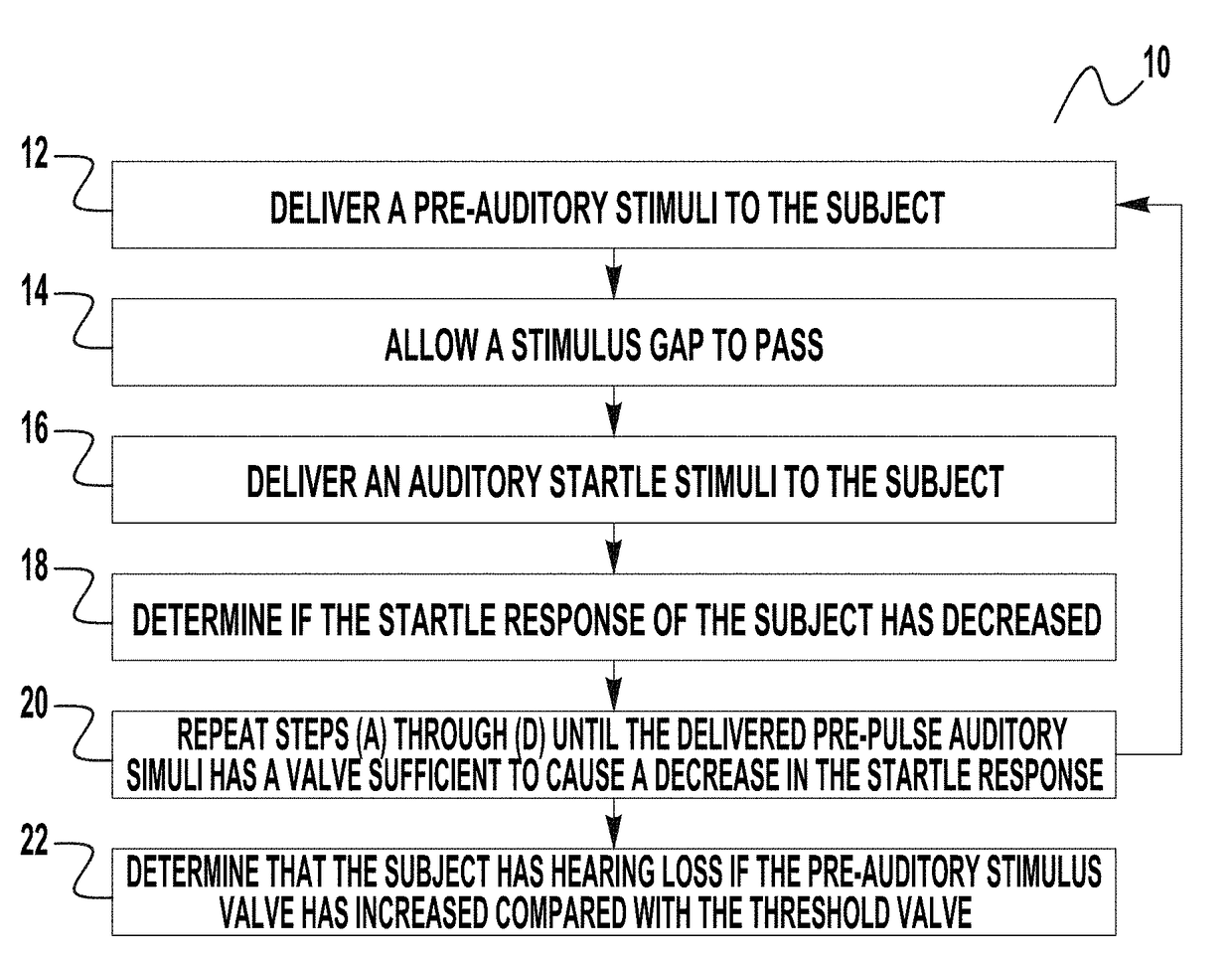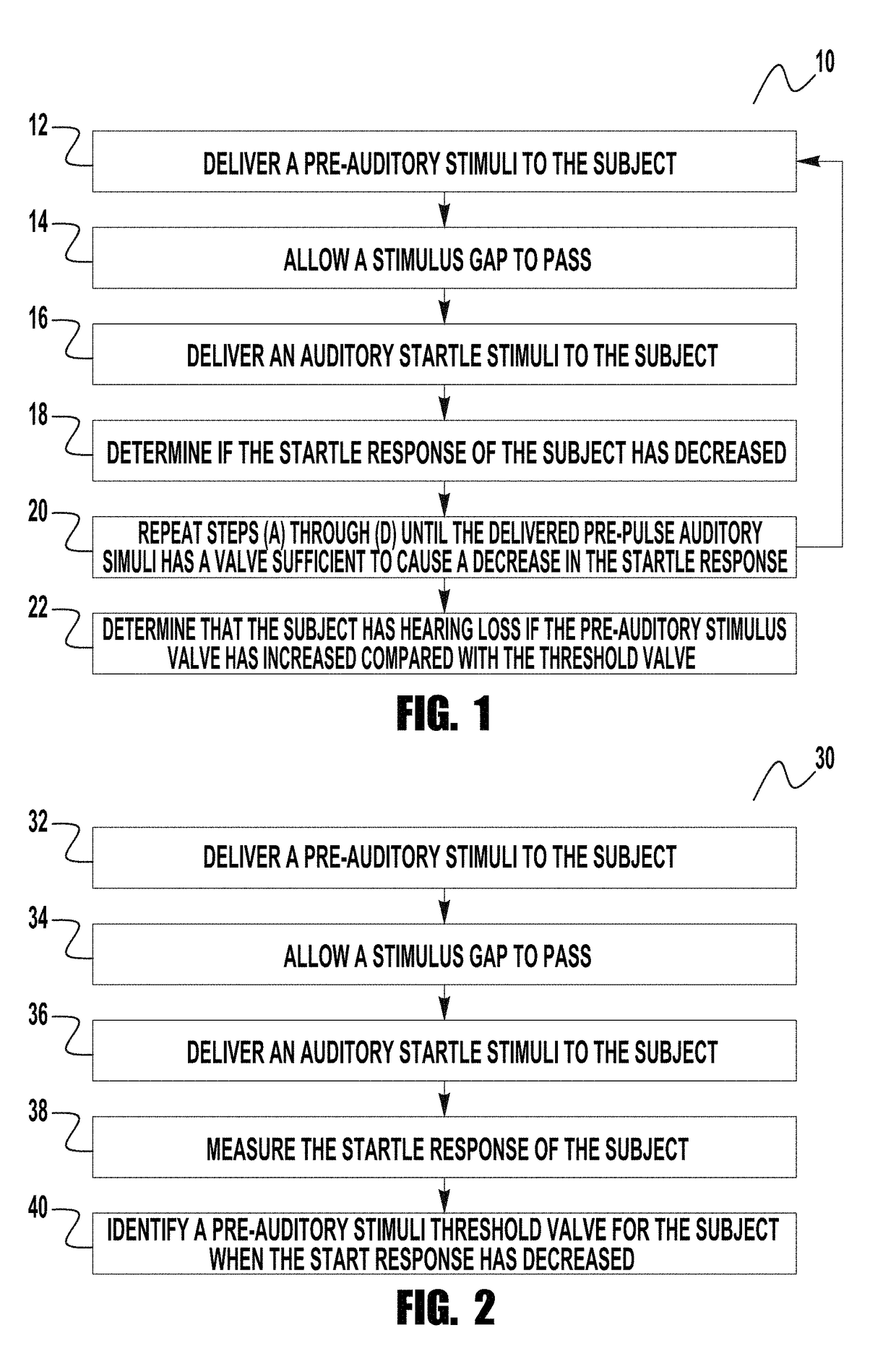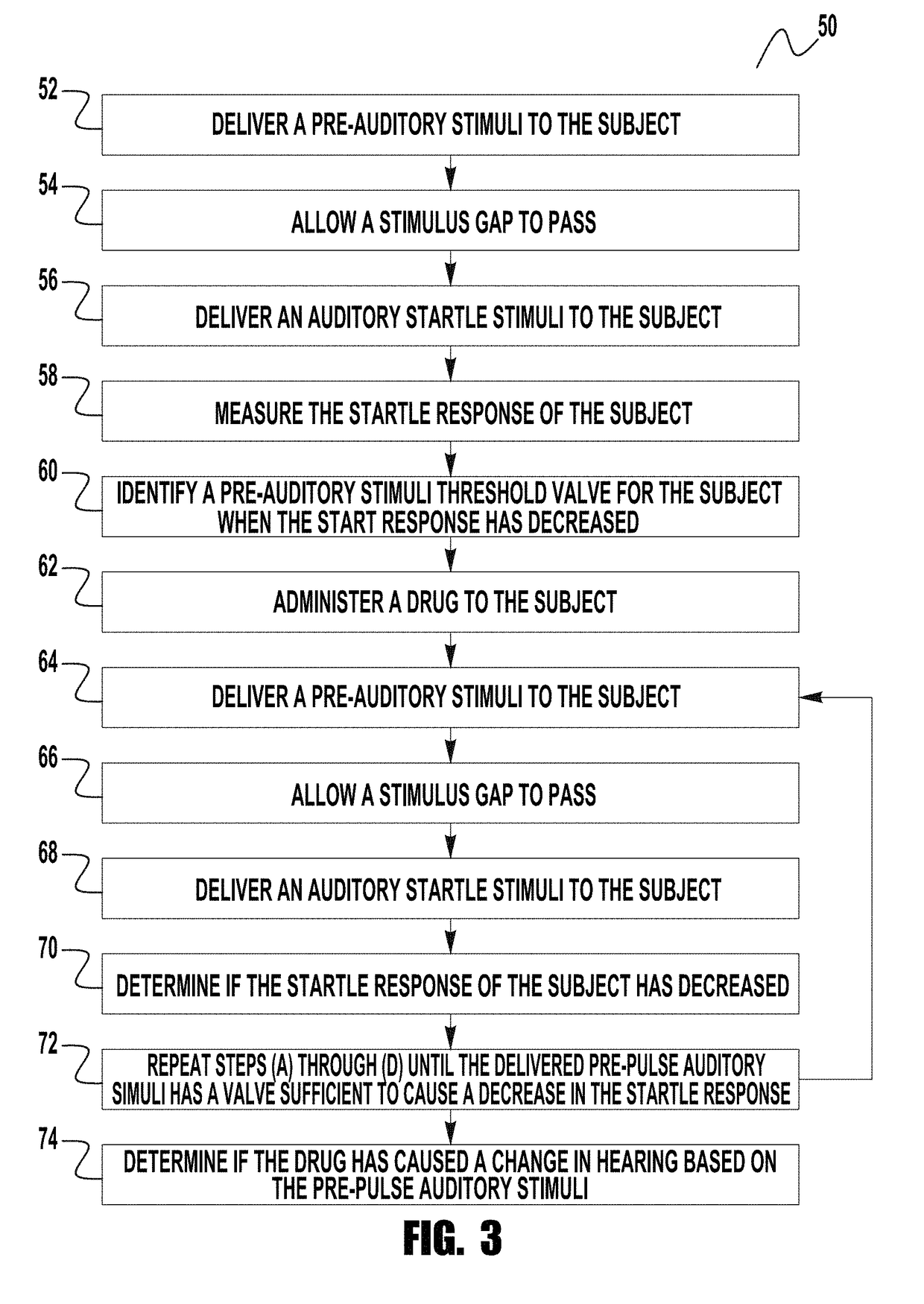Prepulse inhibition of the acoustic startle reflex
a technology prepulse, which is applied in the field of prepulse inhibition of acoustic startle reflex, to achieve the effect of avoiding confounding anesthesia and high data throughpu
- Summary
- Abstract
- Description
- Claims
- Application Information
AI Technical Summary
Benefits of technology
Problems solved by technology
Method used
Image
Examples
example
Prepulse Inhibition of the Acoustic Startle Reflex Vs. Auditory Brainstem Response for Hearing Assessment
[0050]Although PPI audiometry has several advantages over other currently used hearing assessment methodologies, several important questions need to be explored before it can be widely applied. First, it is still unknown whether it is sensitive enough to assess hearing in individual animals, which would be much more beneficial than group averages. Second, the extent of PPI threshold reliability from day to day is also unknown. Third, it is important to know whether PPI audiometry can be used to detect permanent threshold shifts caused by the most common hearing insult, noise-induced hearing loss. The goal of this study was to address these questions and compare PPI audiometry with the traditional ABR approach.
Methods
[0051]Animals
[0052]A total of 16 male CBA / CaJ mice obtained from Jackson Laboratories were used. To avoid startle variability which is known to result from hormone fl...
PUM
 Login to View More
Login to View More Abstract
Description
Claims
Application Information
 Login to View More
Login to View More - R&D
- Intellectual Property
- Life Sciences
- Materials
- Tech Scout
- Unparalleled Data Quality
- Higher Quality Content
- 60% Fewer Hallucinations
Browse by: Latest US Patents, China's latest patents, Technical Efficacy Thesaurus, Application Domain, Technology Topic, Popular Technical Reports.
© 2025 PatSnap. All rights reserved.Legal|Privacy policy|Modern Slavery Act Transparency Statement|Sitemap|About US| Contact US: help@patsnap.com



